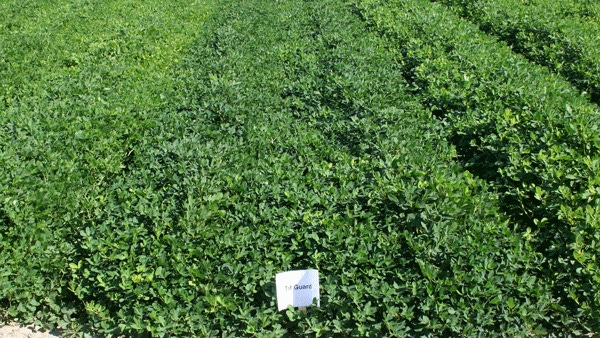
Larger-seeded peanuts change thinking on calcium needs
• For the past couple of years, says Harris, Georgia researchers have looked at peanut calcium nutrition and germination.• With peanuts, “place” can be critical because you have to have soluble calcium in the pegging zone or the top 3 or 4 inches.• Peanut yields definitely can be limited in low-calcium environments.• It’s probably better if growers are on the higher side as far as calcium goes
April 15, 2011

New larger-seeded peanut varieties — such as GA-06G, FLA-07 and Tifguard — have changed how growers think about calcium requirements.
“A peanut is fairly unique,” says Glen Harris, University of Georgia Extension soil scientist. “Being a legume, it fixes nitrogen, and it’s also a good scavenger of P and K. So really, as far N, P and K fertilizers, there’s not as much emphasis as with calcium. Calcium is needed in peanuts for yield, for avoiding pops, and for germination.”
For the past couple of years, says Harris, Georgia researchers have looked at peanut calcium nutrition and germination.
“The buzz words nationwide in fertilization for all crops are the four R’s — the right rate, the right time, the right place and the right source. With peanuts, we’ve concentrated mostly on the rate side, looking at rates mostly of gypsum. This past year, we started looking not only at sources but also at timing. We’ve talked about putting out lime at planting, gypsum at bloom-time, and exploring questions of how late is too late to put on gypsum, so we have different issues with timing,” he says.
With peanuts, “place” can be critical because you have to have soluble calcium in the pegging zone or the top 3 or 4 inches, says Harris.
“It needs to dissolve in water and get right through the hull to the developing nut. That’s why we’re looking at surface-applying most of these materials,” he says.
If you’re producing a peanut for seed, University of Georgia recommends that a grower put on 1,000 pounds of gypsum, no matter the calcium level in the soil. “If you’re using the lime method, we say use it at planting. And for everything else, we say you can take a pegging zone test. If you have at least 500 pounds of calcium, you don’t need to put gypsum on those peanuts,” says Harris.
Peanut yields definitely can be limited in low-calcium environments, he says. “We looked at Georgia Green as our smaller-seeded peanut and GA-06G as the larger seeded. In a very low-calcium environment, 271 pounds in the pegging zone, we see dramatic yield increases when we put on that gypsum.”
Want good seed germination
Producers want good seed germination above 85, more like 95, says Harris. “Both Georgia Green and GA-06G respond to gypsum rates with better germination, and it’s directly correlated to calcium in the seed. Regardless of the situation, GA-06G always has less calcium in the seed than the smaller seeded variety. To really get good germination, you need to be up around 400 to 500 parts-per-million calcium in the seed.”
Researchers continue to look at different calcium sources, says Harris. “We do not recommend foliar calcium. We are looking at some things like calcium chloride through the pivot at about 30 pounds per acre, but that’s still in the early stages. Lime at planting did not work as well in our study as gypsum.”
In Alabama, Auburn University Extension peanut specialist Kris Balkcom reports on a study that was conducted in a low-calcium area, with 300 to 400 pounds of calcium per acre.
“We went in with three different treatments — a check plot, two different rates of gypsum and lime. We did this during the past three years. The only year we got a response in yield from that lower level by adding gypsum and lime was last year. The gypsum was a lot more soluble, and we got just enough rain that it made an effect on yield,” he says.
As far as seed calcium content, Balkcom says he saw a response to the gypsum and the lime compared to the check plot. “It showed that no matter what you were using, it was still going to the seed. This is why you use gypsum on seed peanuts. It is more water soluble, and you can get it to the seed,” he says.
If the soil pH is below 5.8, Auburn University recommendations will trigger a lime treatment, says Balkcom. “If pH was 5.9, and soil-test calcium level was 500, Auburn University wouldn’t recommend putting on anything. But if you call and ask me, I’d tell you to put out some lime. It’s not going to raise your pH too high, you’re on the borderline anyway, and that would give you another couple hundred pounds of calcium out there,” he says.
Balkcom says he’s more comfortable if growers are on the higher side as far as calcium goes. “But if you’re above 700 pounds of calcium in that top 2 inches, you don’t need anything. We have more problems with people putting out too much calcium and getting that rate too high.”
Always sample early, he says, and see if you can get by with lime because the prices of gypsum have skyrocketed in the past two years.
About the Author(s)
You May Also Like



